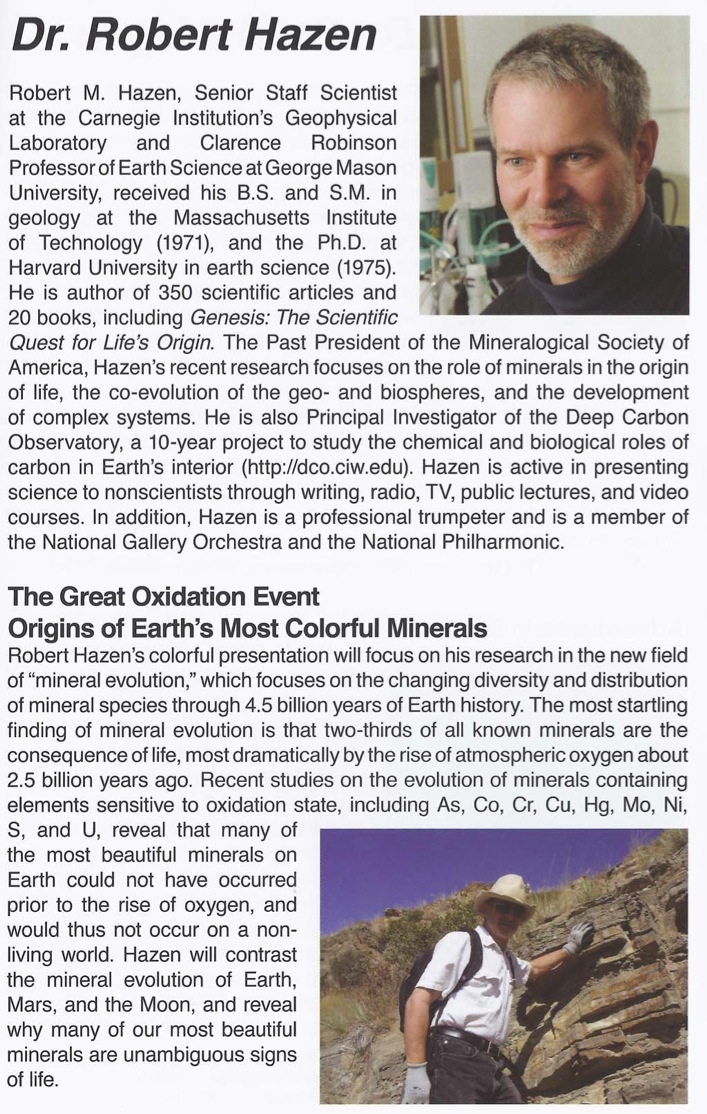March 2015 Program
Mike showed a DVD presentation on “Mineral Evolution” by Dr. Robert Hazen, who is a professor at George Mason University and the Principal Investigator of the Deep Carbon Observatory. (http://dco.ciw.edu)
This was very new information, presented in August 2014. The presentation took us back in time to the Big Bang when all the known elements were formed over several million years, leading to the formation of the 4900 minerals known today. The explanation was delivered by using ten “Stages of Events”. We were asked to name the earliest known mineral. (See end of this summary for answer.)
Stages one through three involved the formation of elements, compounds, around 60 minerals, planetesimals, and finally the planets.
Once Earth developed and water was added to the equation, over 1500 new minerals formed in the fourth and fifth stages. These minerals were not colorful however.
Stage six is very important to those of us who adore colorful minerals, because it was during this stage that life began, and there was a co-evolution of life and minerals.
The early microbes began photosynthesis and in stage seven we see COLORS! The Earth’s surface was red due to iron, and the ‘great oxidation event’ produced thousands of new minerals that we enjoy seeing and collecting today.
Two-thirds of all known minerals are due to the formation of life.
Stages eight through ten brings us up to the Cenozoic era, in which we are now living. During the last billion years of the Earth’s development, we saw a Snowball earth (most of the surface was ice) and the evolution of plants and animals into six kingdoms.
Dr. Hazen used evidence from biology, geology, and a new concept – using mathematical equations and graphs to show how the evolution of minerals has occurred.
These equations show that more than 50% of our minerals are located in only 5 or less localities. Some exist in only one location!!
Earth is a unique planet, for sure!! (Answer to question posed in first paragraph is diamond which is made from pure carbon).
For those that want to revisit Dr. Hazen’s materials, there is an article that summarizes the points of the presentation we enjoyed available here.
A condensed version of his presentation (as well as other talks he has given) is available at this link. Both these instances pre-date the presentation we saw, so his material has continues to evolve.
An expanded version of the presentation (“The Co-Evolution of the Geosphere and the Biosphere”) dated February 2013 is found here. This is 90 minutes long and given to a scientific audience, so buckle up your seat belts!


